Review and photos by Mabel Luong
The Front Gallery is an art gallery located by Stony Plain Trail, and features paintings and sculptures by local artists. I visited their recent exhibition, “New Works”, which—according to the website—is a “group exhibition featuring new work by gallery artists”. By gallery artists, I mean that The Front Gallery (owned by Rachel Bouchard) has several artists that they are on good terms with—almost like an agent—and as such, they display the artists’ work.
Upon entering, visitors are given a sheet with the names of the pieces corresponding to the numbers, as well as the medium, size, and price that the piece is being sold for. You can tell that this gallery is proud to display the works of their artists, showcasing their talent as well as presenting visitors with the opportunity to buy a piece. On the website, they mention that you can take a piece home to see it in your living room (or anywhere you want to see it) before making a final decision about purchasing it, and they also offer options for custom framing, delivery and installation. I think that’s a wonderful thing to have, because the exhibit is amazing, and I’ll talk about a few pieces.
A sculpture that immediately caught my attention was of a nude male body, kneeling, leaning forward almost as though he were about to take off at a sprint, somewhat reminding me of Greek neoclassical sculptures in terms of the sheer attention to detail. The arms ended just below the shoulders, and the neck was a stump, and where the stumps were, the bronze looked raw and almost like broken stone or dry clay that crumbled. The lines of the muscles and the bones of the body were stark, highlighted by the light coming in through the window. It seemed like he would move at any moment. There were some parts that were crumbling like the stumps—on his ribs, lower back, and behind his thighs—and it truly made me think of fragments, just like the title. I wasn’t the only one who loved it—my fiancé, the art student, loved it as well, and he doesn’t often praise things.
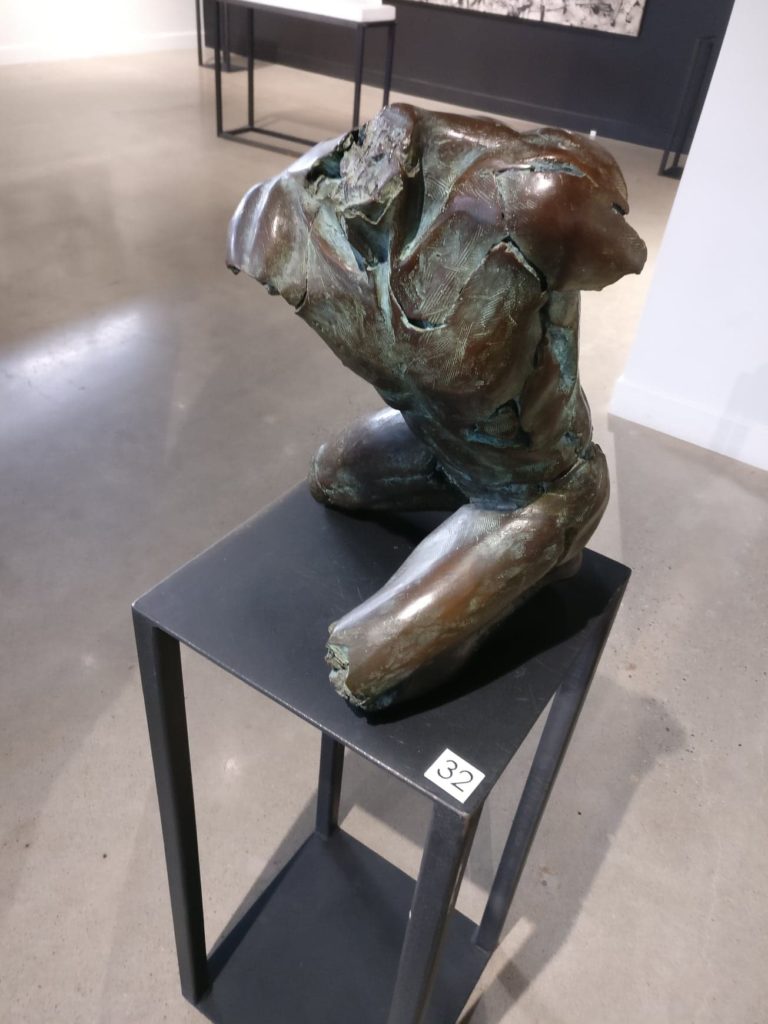
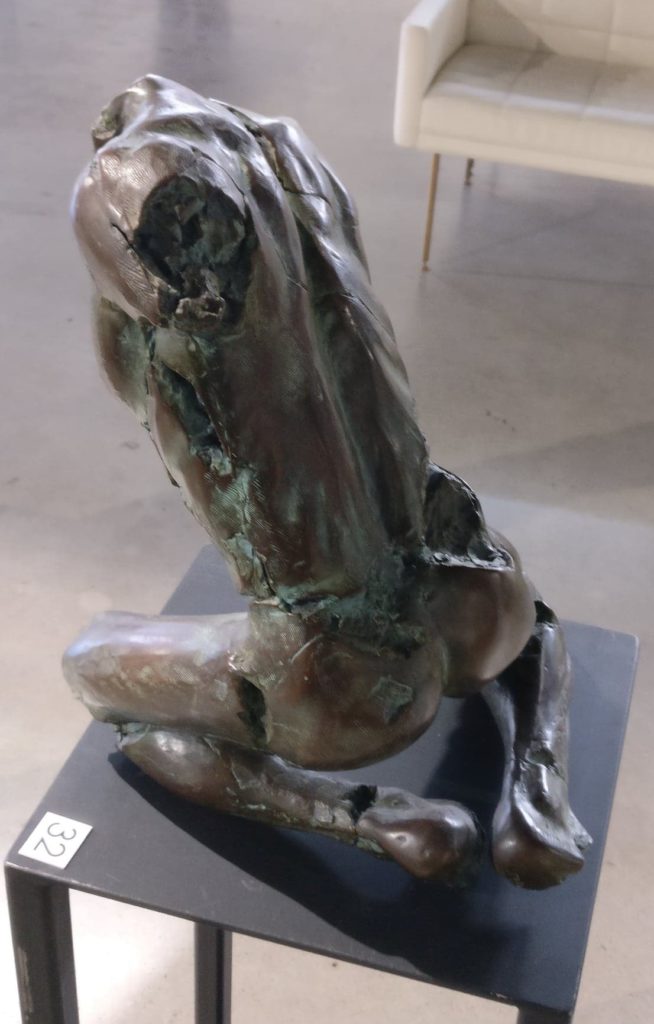
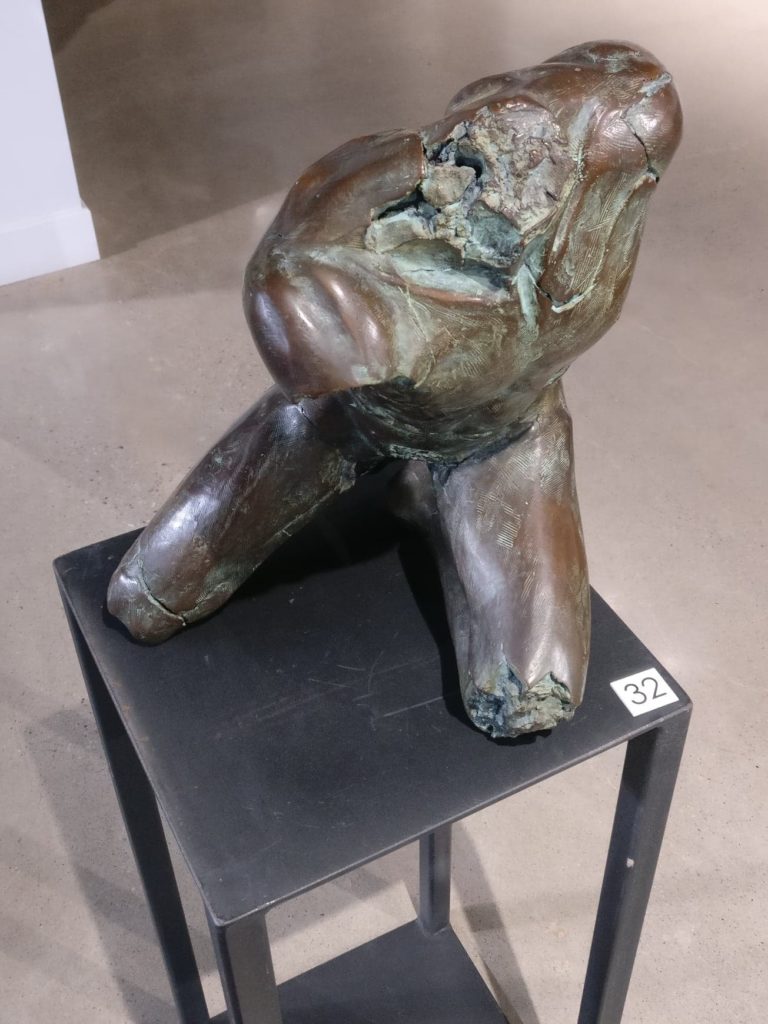
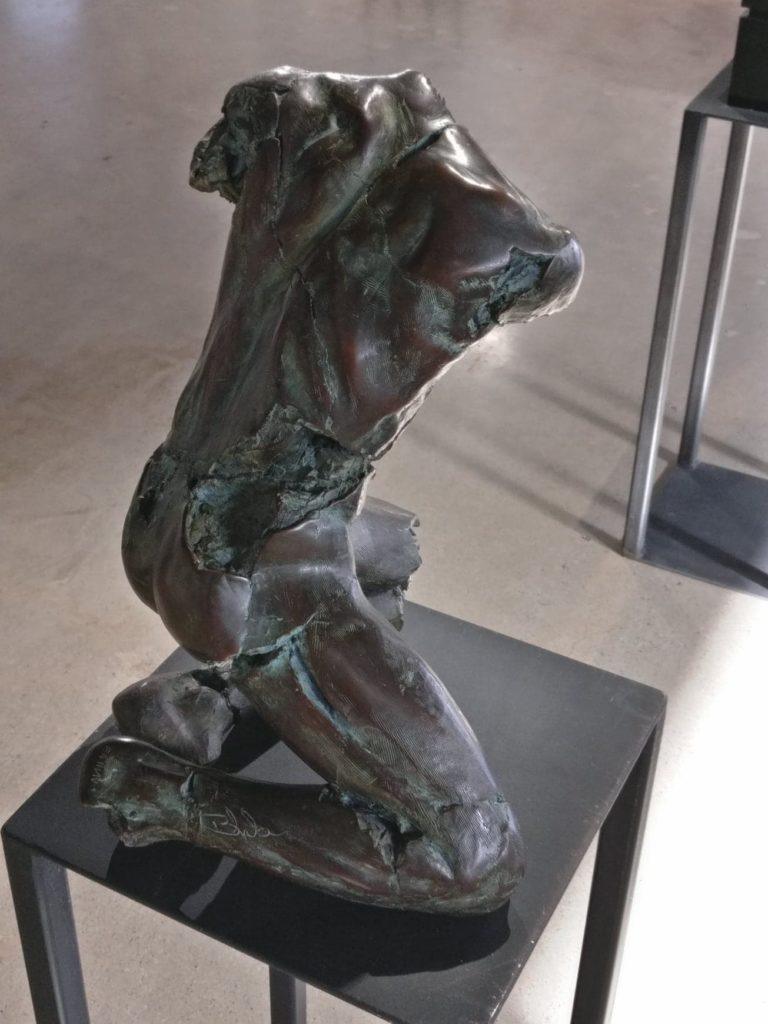
Fragment Butterfly PFM-1 by Blake Ward
The piece I just described was “Fragment Butterfly PFM-1” by Blake Ward, made of bronze, and is 17” x 10” x 15”. Going for $31000, it is the fifth most expensive piece displayed in The Front Gallery. I think the prices are exorbitant for a reason, given the materials, time, and effort that an artist puts into their work.
Ward is one such artist, a Canadian born in Yellowknife and raised in Edmonton, with a Bachelor of Fine Arts from the University of Alberta. His work certainly demonstrates his love for “the beauty, grace and symmetry of traditional figurative sculpture”, as is mentioned in his bio on the gallery’s site. He is interested in “creating a characterization of the Spirit […] using sculpture to transcend disciplinary boundaries between the physical bodies in bronze and the self-knowledge and understanding of the ethereal realm that is our internal landscape”.
His works start out in clay, and then use the “lost wax method”, the final product of which is either done in bronze or marble. Fine detail is characteristic of his work, though he is moving on to series of “de-sculpted” figures, which is his “Fragments” series. According to his website, that series was inspired by his time in Vietnam, after seeing the devastating, long-term effects that landmines have on people all over the world. I think he does that beautifully in “Fragment Butterfly PFM-1”, as well as his other works in this exhibit.
There were several paintings by Dave Thomas, an Edmonton-based artist who began his career painting murals but moved to fine art, studying other artists’ work and experimenting, until he developed his own style, which blends realism and abstraction. These paintings depict youths that appear to be in some state of disconnect from the world. The background in the paintings were of various colours, the shades all related so that they blended evenly.
The painting that stood out to me most was titled “Back Up”, done with oil, acrylic, and aerosol on canvas. It is 38” by 38” and is priced at $3800. It depicted a youth posing as though he were about to take a selfie in the mirror, wearing a white hoodie that was skillfully painted to gradually blend in with the background, so it looked like the youth and the wall were becoming one. Only two thin red lines delineated the curves of his shoulders, and some shimmering gold paint the hood.
Given the painting, I thought the name was fitting—it seemed as though the youth was backing up into the wall, retreating. It seemed to serve as a comment on how technology and social media blend us into our surroundings—perhaps making us unaware of them, or how even if we do things like post selfies, we end up lost amongst a sea of many others with nothing to truly set us apart from the rest.
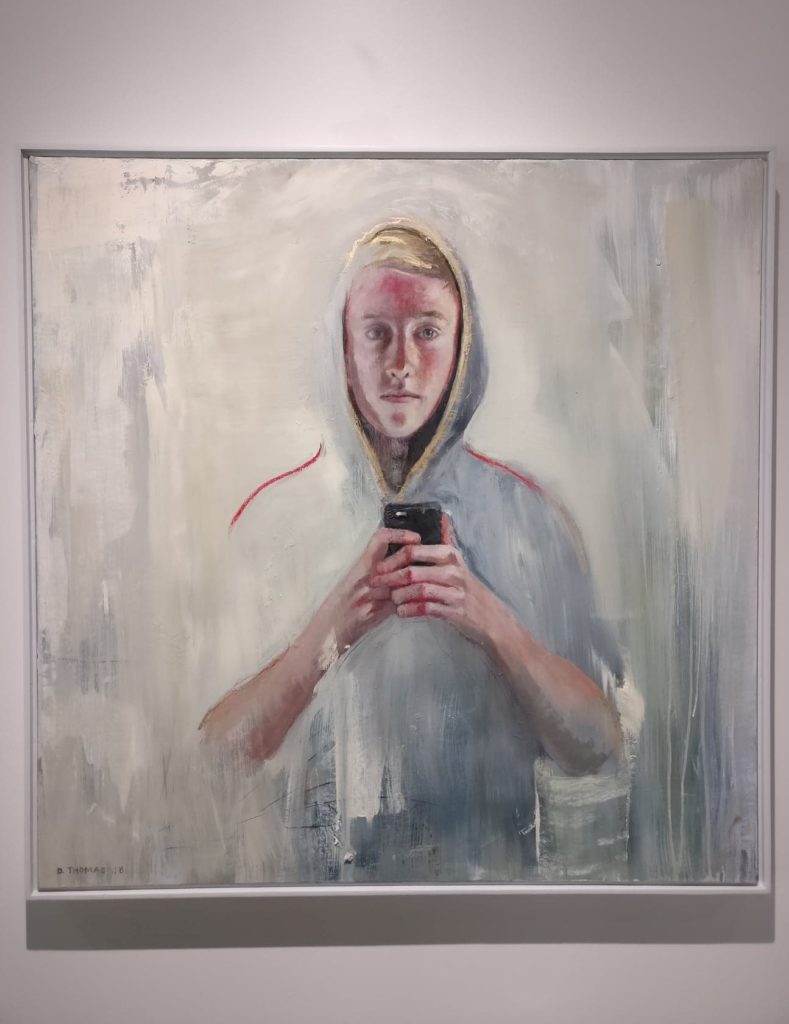
Thomas’ bio on the gallery’s site mentions that he “currently focusses on oil paint and mixed media, with special attention to the blending of textured versus smooth and translucent layers”. The different layers are clearly visible, and there are places in some of his paintings in which the paint stands out and isn’t blended in with the other strokes. His goal is also “to create an atmospheric abstract background in which his figures move in and out in a way that mirrors unpredictable, uncontrollable, and unstructured existential reality”, which I believe is especially true of the youth in “Back Up”, blending into the background that matches his hoodie. His technique and medium convey the “intensity, feelings, and essence” of his subjects, as is stated on his site.
One of his other pieces, similar to “Back Up”, is “Recharge”—also in this exhibition—which was previously displayed in an exhibition that showcased his work as well as that of his brother, who is also an artist, with a focus on how connection works in society.
Another piece that dominated the grey wall at the back was titled “Moonlight II (Diptych)” by Tom Gale, a western Canadian artist. It was created with oil on a 60” by 96” canvas, and the sale price is $10,500.
It initially looked chaotic, with black splotches and lines across the canvas, accented with some heavy strokes, with writing overtop in pink, white, and block letters almost obscured by the maelstrom. I could not take my eyes off it, and I found myself being drawn closer. The words were a bit difficult to read, and the only ones I could make out were the block letters, which said “To speak is to invite the stigma that attaches the victims”.
It struck a chord with me, the words contrasting with the seemingly violent background—it was quite sad, thinking about all the people who couldn’t say anything about their suffering for fear of being judged or seen differently, even if all they want to do is to be able to reach out for someone to help with their healing. I thought it was very well done and spoke to a very important contemporary issue.
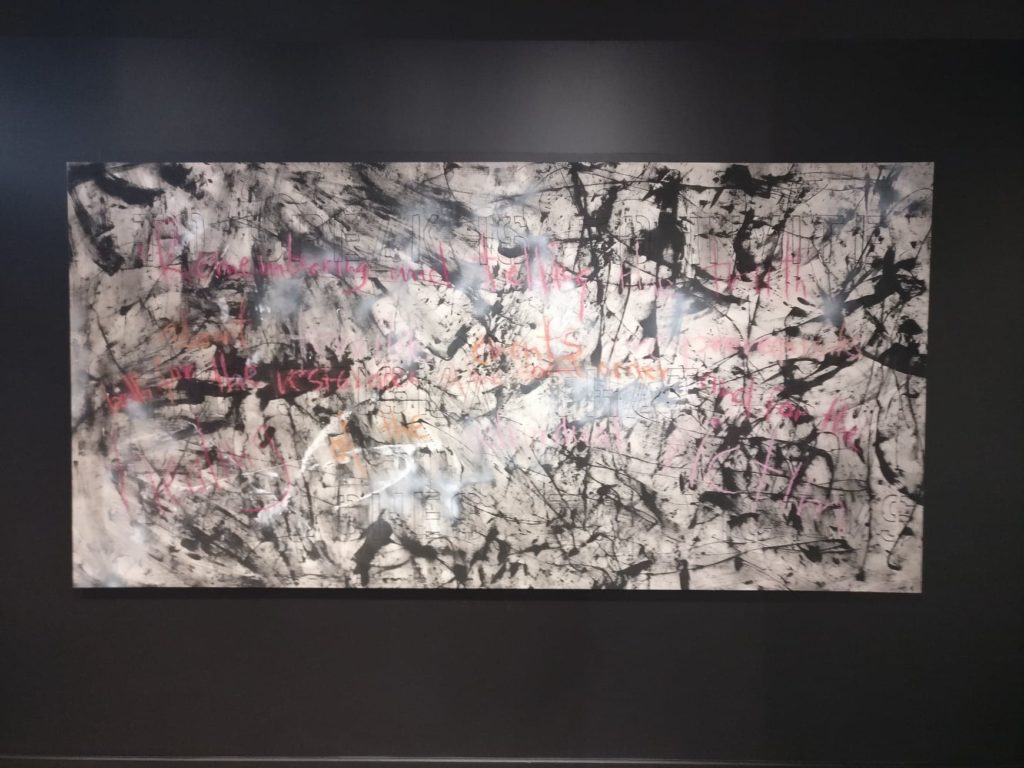
This piece is very different from Tom Gale’s other works, which are usually paintings of landscapes. His style is more expressionist, as opposed to realist, and that sense is conveyed through his process of painting, which Portia Priegert describes as “smearing or scraping it, layering on more colour, and repeating the process”. In his bio, he states that his expressionist way of painting expresses “[his] own sense of spiritual oneness with earth[, and,] conversely, the isolation of [his] conscious being from [his] environment”, because he is clearly depicting landscapes, but they are not realistic. Through his paintings of landscapes, he intends to “convey message and mood”, which is often cheerful. This piece is more abstract, and not of a landscape, but I still find it to be very profound.
There were some more pieces that depicted scenes from the suburbs, mostly in back alleys, and mostly scenes from winter, though there were some that showed the front of houses and were from sunnier days. All were done by Kari Duke, another Edmonton-based artist, who is also self-taught.
The paintings displayed in this exhibit were created with oil on canvas. The brushwork lent everything in the paintings a somewhat soft look, and made the scenes seem very inviting. The style is very much characteristic to her and is found in her other pieces, which usually depict scenes of the suburbs in Edmonton, with very particular detail of the reflection of light and the beauty of nature, depicted in shades very true to real life.
Her pieces are sentimental and romantic, and looking at them made me feel like I was taking a stroll through the places depicted in the paintings, and it made me feel at peace, which I loved. If I had more money, I would consider buying one of her paintings to hang in my living room. To give an idea of cost, her smaller pieces—about the size of a photo album—go for roughly $700, and her larger ones can go for thousands.
Another piece I loved was one of a few by Cynthia Fuhrer, a born and raised Edmontonian, who got her MFA from the University of Alberta, won multiple awards, and is now an instructor at Grant MacEwan, among other impressive things. The piece is called “Tangled Together” and was done using oil on birch panel with a diameter of 48”, which is to be sold for $4800.
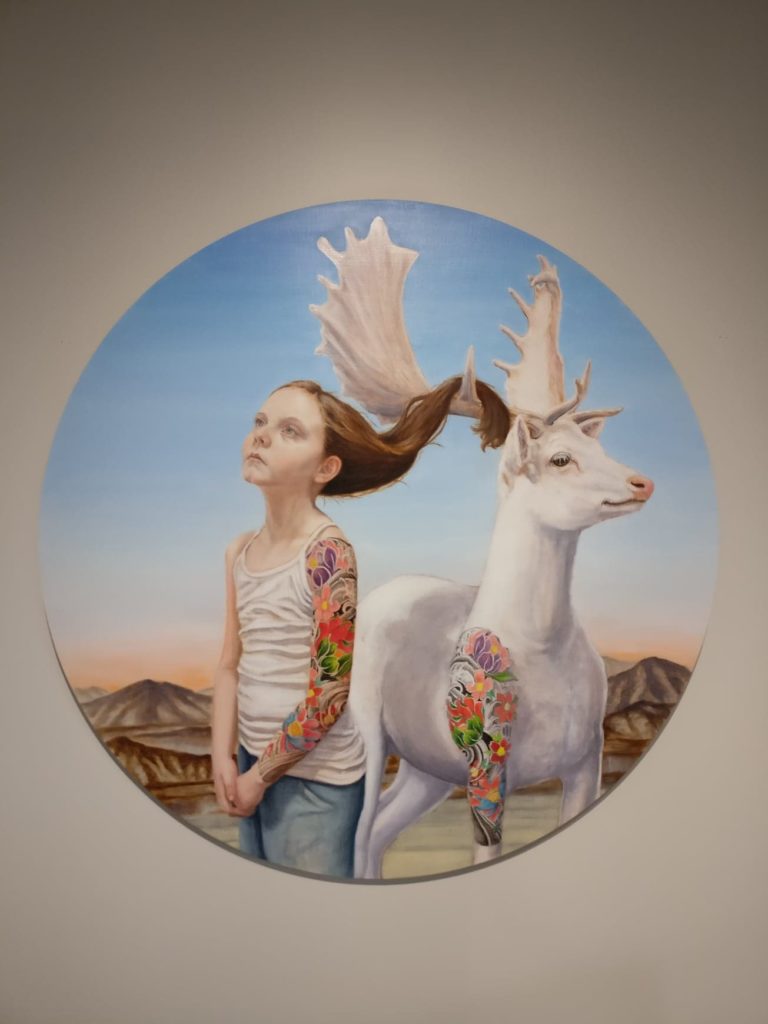
The colours were beautiful, depicting a young girl with a white moose against mountains before a sky turning pink with sunrise. Both stand tall and proud, the girl’s hair draped over one of the moose’s antlers, and both sported vivid, colourful sleeves of flower tattoos, reminiscent of a rainbow. The brushwork made everything look soft, depicting the beauty of the harmony that could be had between humans and nature, and how both belong to nature. Though I found all her paintings to be stunning, that was the one that blew me away.
According to Cynthia Fuhrer’s artist statement, her portraits—unlike traditional portraiture—do not necessarily depict a human likeness or focus on their identity, but instead, “exists between figurative and abstract modes”. She says her aim is to balance the figurative element using paint to create a unique surface and form, the process of which creates control and non-control of the material, and to find a balance between that which is depicting the form of a human, and what it is to be human.” I think she does this beautifully with the vibrant colours, depicting both a young girl but also the humanity of one connected with nature the way that she is with the white moose.
The Front Gallery
10402 – 124th Street, Edmonton, Alberta
gallery website
open from 11 am to 5 pm on Tuesdays to Fridays, and 10 am to 5 pm on Saturdays.
The current exhibition is History as a Personal Memory, showcasing the works of Ira Hoffecker, which runs until November 28.

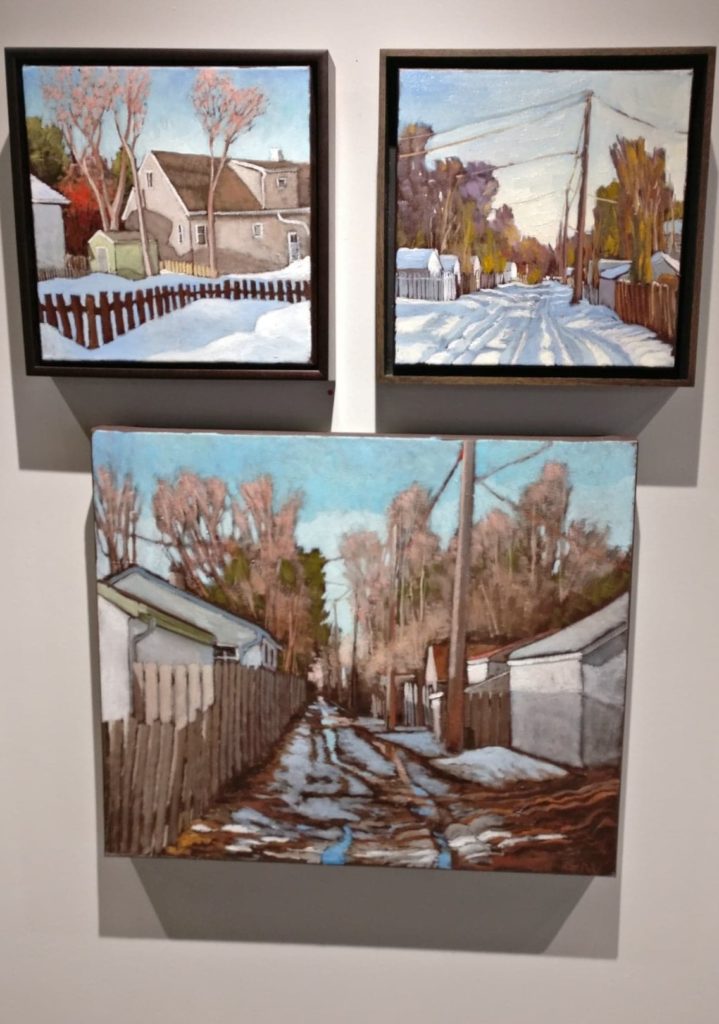
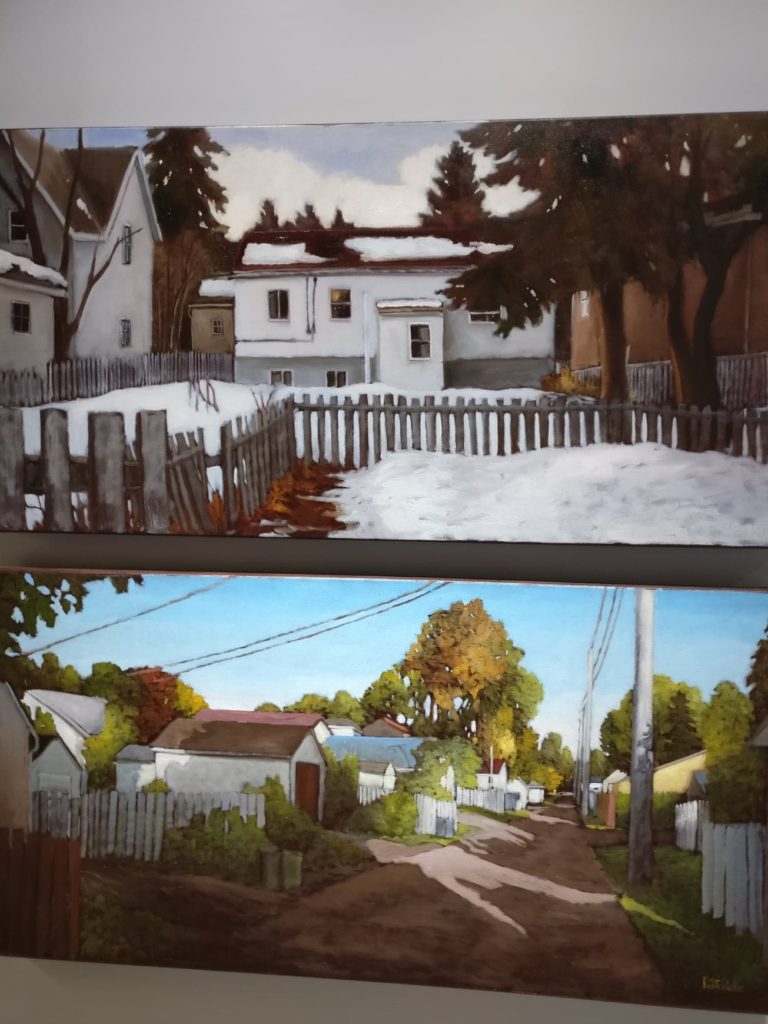
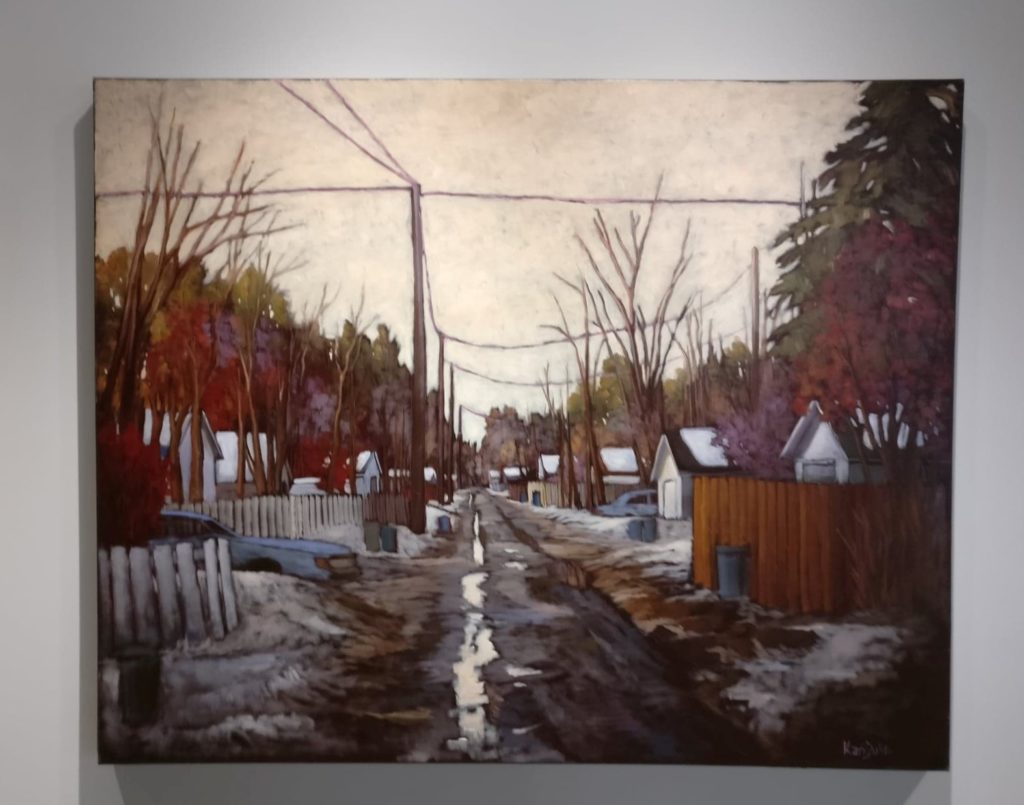
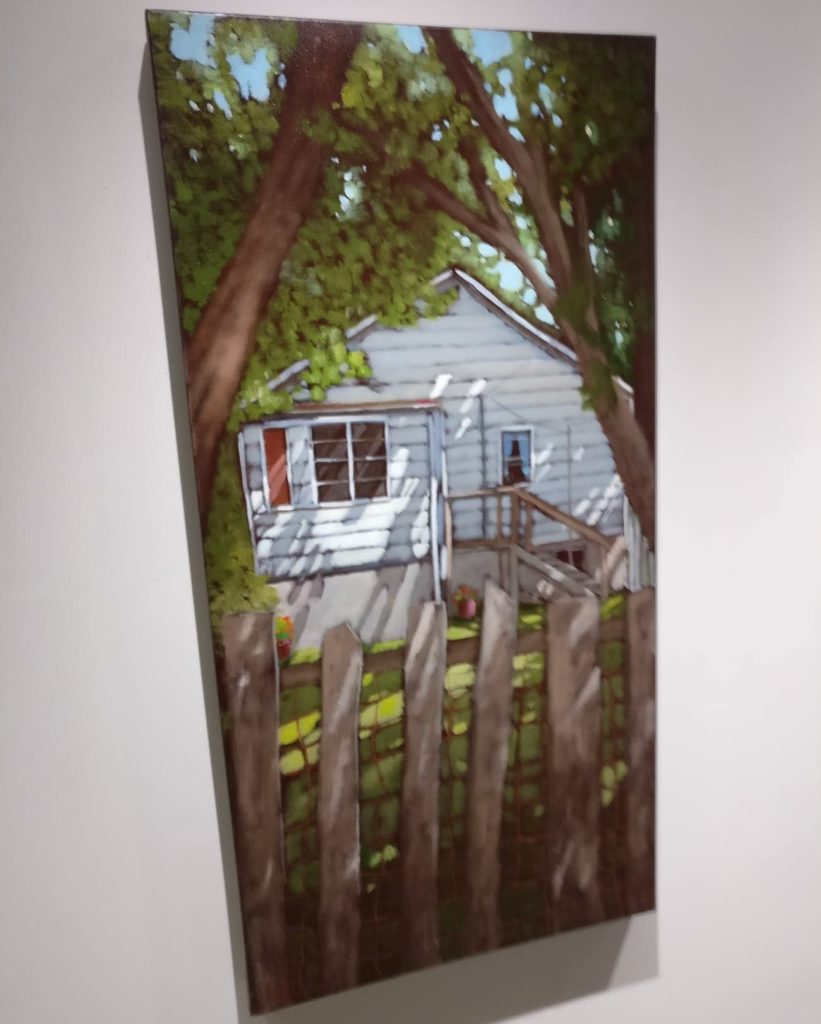

Recent Comments